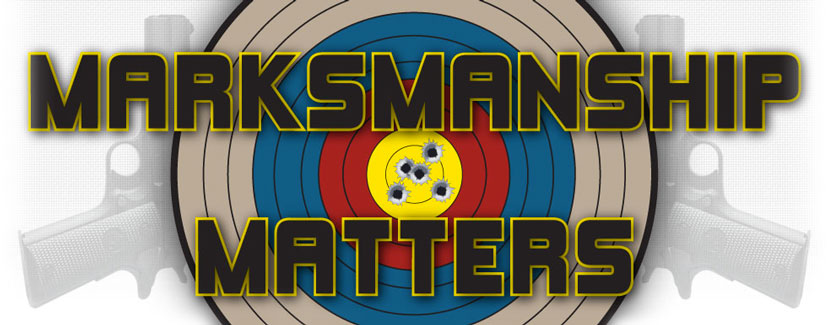AR15 Refresher Course Description
This class is available to those clients who have completed the Marksmanship Matters 4 day-Defensive Pistol Course and the
4-day AR15 course. This 2-day course is designed to provide you with a refresher for the training that you have already received and to enhance your skills with new challenges, including shooting the LAPD Patrol Rifle Course for record to prove competency.
The AR15/M16 is the second most produced rifle in history. The AR15 is one of the most common center fire rifles in the U.S. and is often kept for personal protection. When an AR15 has been deployed by a homeowner in self-defense the results have been conclusive. The AR15 is one of the most efficient firearms an American could use in an armed encounter. The AR15 is light weight, short in length, has an appropriate magazine capacity, does not over penetrate, has very low recoil, adequate power and due to the telescoping butt stock can be adapted to fit small statured adults and qualified teenagers as well as adult members of the household.
I carried and used the M16 rifle extensively as an Infantry Sargent in the Air Cavalry in the Republic of South Vietnam in 1967/1968. I attended the Gunsite 223 course (AR15) and taught the course several times as well. I also taught the Gunsite advanced AR15 course. I carried and deployed an AR15/M16 many times during my tour of duty with LAPD SWAT. I was the primary LAPD SWAT instructor teaching the AR15/M16 for 14 years. I was also the primary instructor on the AR15 for the 250 Officers of the elite LAPD Metropolitan Division (Crime Suppression unit). I conceived, established and then trained and maintained the 300-man LAPD M16 Patrol Rifle cadre for 6 years. The Marksmanship Matters AR15 Course is based on these experiences.
Detailed equipment list for the AR15 refresher course
A suitable AR15/M4 type rifle–must be safe, reliable and reasonably accurate. Most shooters prefer a 16-inch barrel AR for defensive use. For this course we specify an M4 type (16-inch barrel) AR15 because the additional velocity of the 20-inch barrel would cause damage to our steel targets. If one client arrived with a 20-inch barrel we would have to move the minimum shooting distance from 100 yards to 150 yards to protect steel targets from damage.
At least three twenty-round magazines which we strongly prefer over thirty-round magazines. Thirty-round magazines will interfere with several shooting positions and some sling manipulations.
An approved sling is required, and a two-point sling is strongly preferred. A nylon carry sling will suffice if it is long enough. The sling techniques taught are based on a simple 2-point nylon military carry sling.
A shooting mat will be required. You may use a piece of carpet or a heavy moving blanket for a mat.
Elbow and knee pads are recommended and encouraged.
A rifle magazine pouch which holds at least one magazine.
A roll of electricians’ tape to secure the ends of the sling once the proper adjustment has been obtained.
Five A-Zoom dummy rounds. These are essential to our teaching methodology. No other type of dummy rounds will be accepted.
300 accurate, safe and reliable factory rifle cartridges.
The number of rounds fired varies between individual classes.
We suggest 55 grain FMJ made by a major American company.
This ammunition is only slightly more costly than foreign made or off brand ammo.
Rifle ammunition should all be of the exact same load.
Note: Any change in the load can/will change the zero.
Training will be impeded if ammunition is changed during the course.
No green tip military ammunition.
No ammo with any steel in the bullet such as Russian made.
A small amount of steel in the bullet will damage the targets.
Projectiles containing steel have caused brush fires.
We have experienced numerous problems with Wolf ammunition,
including misfires, functioning problems and steel target damage. Wolf ammunition will not be allowed.
Low power optics are optional. 3.5 power is the suggested maximum.
One to 2.5 power optics are preferred.
A suitable pistol such as the one you used while attending Pistol 1-4.
Strong side butt to the rear holster with some form of retention.
At least three magazines for the pistol.
A pistol magazine pouch.
Fifty accurate, safe and reliable factory pistol cartridges.
Shooting gloves with fingers exposed are recommended.
Boots or sturdy high-top shoes should be worn to protect ankles.
Baseball cap.
Ear plugs and ear muff type hearing protection.
A field grade (thin) PAST shoulder pad worn under the shirt for calibers above .223 is optional.
Both clear and dark shooting glasses.
A wide heavy-duty belt that will fit your belt loops to support your pistol.
Trousers with belt loops are required.
Bug spray is recommended.
Sun block is highly recommended.
One gallon of water (minimum) for each range day per shooter.
Sight adjustment tool for iron AR15 sights.
A pocket notebook to record all zeroing and range data.
writing device (pen/pencil) to record information in your notebook.
Bipods are discouraged.
Military M16 bipods are not allowed.
Binoculars will be needed.
Spotting scopes are optional.
A pouch to secure empty magazines after use is helpful-cargo pockets will suffice.
Cleaning kit is recommended.
Cleaning rod suggested should you need to clear a stuck case.
Fire extinguisher is optional, please bring one if you can.
Personal first aid kit is suggested.
Military clothes pin bipods are no allowed
Vertical grips on hand guard are NOT recommended.
Cheap optics are NOT recommended as they tend not to hold their zero.
Call us if you have any questions.
Larry and Stacey Mudgett
Marksmanship Matters

